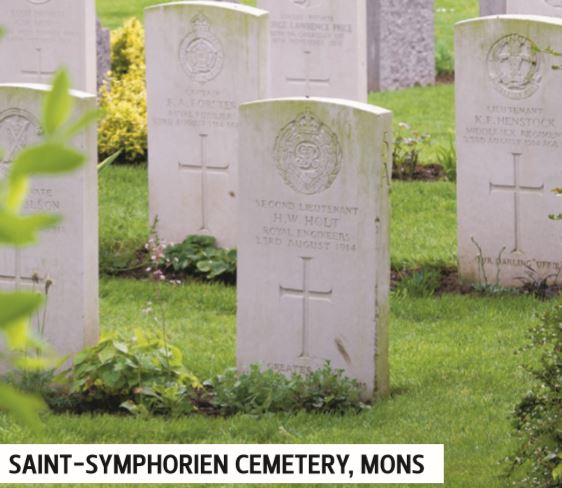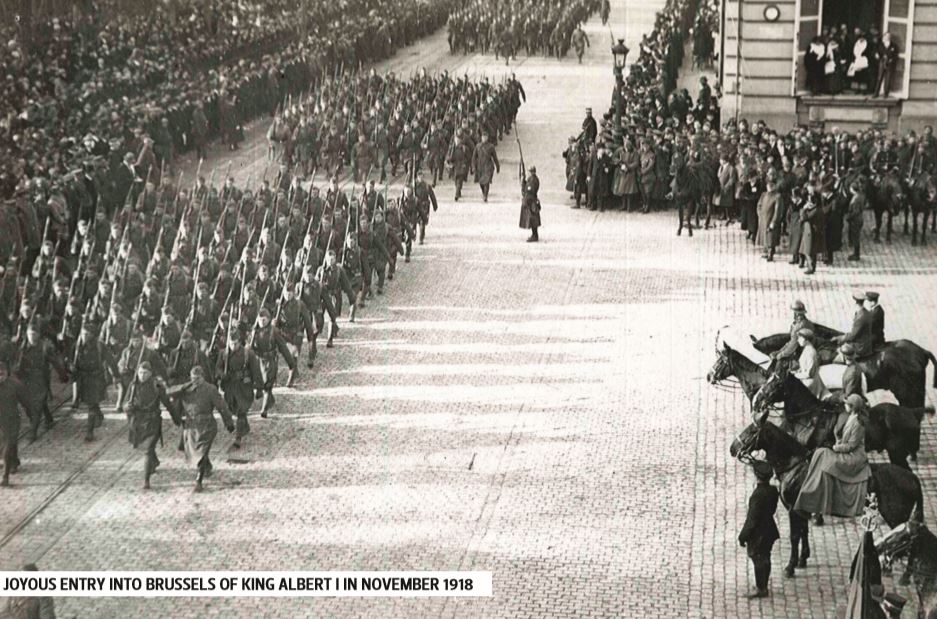- Daily & Weekly newsletters
- Buy & download The Bulletin
- Comment on our articles
Four years of World War One commemorations in Belgium draw to a close
Four years have passed since Belgium launched its World War One commemorations at Saint-Symphorien Cemetery near Mons. The sombre list of ceremonies will come to an end on 11 November with events at cemeteries and memorials across the country.
On 10 November, a crowd will gather at Saint-Symphorien for a final ceremony to mark the end of the war. This small woodland cemetery laid out on an old mine is particularly significant, as it mixes German and British graves, including those of the first and last Commonwealth soldiers killed in the war. The following day, the town of Mons will show its gratitude to Canada with a Liberation Parade. Held exactly 100 years after Canadian troops marched into the Grand’Place, the parade brings together several hundred men drawn from the same Canadian regiments that passed through Belgium in 1914, alongside troops from Britain, Belgium and France. “We are holding these ceremonies to remind young people, but also to celebrate our freedom,” Mons mayor Elio Di Rupo told the press.
The commemoration will include vehicles from World War One, historical film footage, music and readings from letters and diaries. At the same time, the local bell ringer will perform a programme of music based on the tunes played as Canadian troops entered the city in the winter of 1918. In the evening, the Grand’Place will be the setting for a light show projected on to the wall of the 15th-century town hall. It will retrace the story of the Canadian army in Europe through the eyes of a single Canadian soldier – George Price, who earned a place in history as the last soldier killed in the war, after he was hit by a sniper’s bullet near Mons at 10.58 on 11 November, just two minutes before the armies laid down their weapons.

There are several events planned in Ypres to commemorate the millions who fought and died around the Flemish city. On 9 November, British artist Val Carmen will unveil the installation Memorial Chairs in Astridpark. Composed of 104 empty chairs, the work represents the countries and regions of the world involved in the fighting.
Several memorial concerts will be held in the Ypres region, beginning with the concert The Great War Remembered in the rebuilt Sint-Maartens cathedral in Ypres on 9 and 11 November. On 10 November there will be a performance of Distortion, a Hymn to Liberty in the Memorial Gardens at Zonnebeke. Composed by Flemish musicians Dirk Brossé, Sioen and Jef Neve, the work weaves together musical fragments based on ideas of freedom and peace.
On the same day, a torchlit ceremony will take place at Crest Farm Canadian Memorial to commemorate Canadian troops who captured the village of Passchendaele in 1917. A larger ceremony will take place on 11 November when the town’s buglers will play the Last Post under the Menin Gate at 11.00, exactly 100 years after the end of the war. Huge crowds are expected, so the city plans to install large screens on the Markt square. A second Last Post is scheduled for the evening at 20.00, but this is reserved for invited guests.

Several exhibitions will take place in Brussels. The Army Museum in Cinquantenaire Park is putting its efforts into Beyond the Great War, a large exhibition looking at the decade from immediately after the war, when the country concentrated on rebuilding, remembrance and creating a better society. The exhibition brings together objects and photographs from various Belgian and international collections to reflect themes such as liberation, mourning and economic prosperity.
It aims to reconstruct the mood of intense emotion and optimism that swept across Belgium following four years of brutal warfare. Meanwhile, the Museum of Fine Arts is to put together an exhibition called The New Berlin, which will look at the bold new developments in art that occurred in Berlin between 1912 and the Nazi power grab of 1932. As well as paintings by Otto Dix, Ernst Ludwig Kirchner and Kazimir Malevich, the exhibition will feature photographs, architectural drawings, sculpture and early films.
The Belvue Museum is approaching the theme from a different angle in a free exhibition that examines the experience of Brussels citizens in 1918 following 50 months of occupation. Mixing objects, photographs and film footage, the museum will look at social issues that affected the population such as healthcare, the refugee crisis, returning soldiers and the reconstruction of democratic institutions. And on a smaller scale, theme park Mini Europe has added a World War One memorial to its collection of European landmarks. The model makers have created five miniature war cemeteries, modelled on existing cemeteries in Belgium, along with a collection of figures reconstructing the Christmas Truce that took place in the trenches in 1914.
This article first appeared in The Bulletin autumn 2018. Pick up a copy in newsagents today or subscribe now...
















